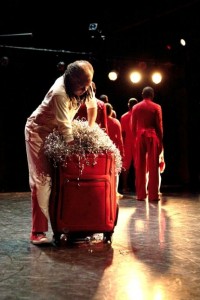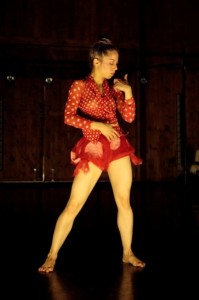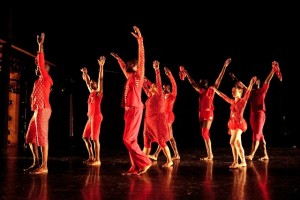Reggie Wilson/Fist & Heel Performance Group
Moses(es)
Jacob’s Pillow Dance Festival
Doris Duke Theatre
July 9-13, 2014
Review by Seth Rogovoy
(BECKET, Mass., July 9, 2014) – There are nearly as many Moseses as there are cultures or ethnicities. Christian denominations each view him somewhat differently; historians may see him as the original founder of representative democracy (his father told him he couldn’t bear the entire burden of leadership on his own shoulders); Jews of different stripes find varying meanings of his life story. Steven Spielberg called him “Prince of Egypt,” and that other famous Jew, Sigmund Freud, actually postulated that he wasn’t even born an Israelite slave who then found himself as Pharaoh’s prime minister, but rather was, literally, a prince of Egypt. (Freud, of course, was out of his mind.)
Whatever. Reggie Wilson’s Moses(es), being staged by his Fist & Heel Performance Group through Sunday in the Doris Duke Theatre at Jacob’s Pillow, reflects the diversity of the Moses stories throughout civilizations and cultures, as well as the meaning of moving from slavery to freedom and then wandering in search of the Promised Land.
The talented company does this through a blend of dance, movement, body percussion, chant, song, lighting, some stage business, and a brilliantly curated soundtrack including traditional and contemporary African chants, African-American spirituals, and even some cutting-edge modern klezmer courtesy of the Klezmatics.
While functioning largely as a tribe, the players – mostly men with a couple of women, all but Wilson wearing variously styled outfits in bright red (Wilson was in white, with red Converse high-tops (a nice touch) – introduce themselves by name, place of origin, and number of years with the company at the outset, suggesting that we are meant also to see them as individuals, which of course we do. And each brings his or her strengths (and weaknesses, purposefully, I think) and characters to their roles. It’s a unified tribe when it needs to be, but it’s also a collective of sometimes headstrong individuals, often cooperating yet sometimes at loggerheads, struggling for power or disagreeing – metaphorically, at least – on which path to take.
At first, the audience is presented with a big pile of tinsel on the stage floor, with a bright red wheely suitcase sitting beside it. In what bordered on a vaudeville comedy routine (it made me think of Harpo Marx for some reason), first a dancer separated the tinsel into two sections – the parting of the Red Sea, get it? – so the dancers could walk through it, and then he slowly and almost magically stuffed all the tinsel into the suitcase. This, while Louis Armstrong one of the number of versions of “Go Down, Moses,” to which we would be treated throughout the 70-minute program.
That program was divided into sections or vignettes, often scored by a different musical number, that may have emphasized rhythm or vocals – both of which were sometimes provided live by members of the ensemble. Each scene presented some different take on a Moses story, although for the most part these were vague or even abstract. One of the most exciting scenes, for example, was when the set was turned into a nightclub, and each dancer strutted his or her stuff, whether that meant moves out of classical ballet, hip-hop, traditional African movement, freestyling, disco, whatever. The lighting was evocative, the music was rich, and the dancers were terrific.
Other pieces could be a bit more intellectual or conceptual. One memorable scene had the dancers actually acting out some sort of advanced mathematical equations – something about fractals. The songs might help determine the “meaning” behind a scene, if there was such a thing, but mostly it could be enjoyed as a series of chapters, not necessarily as a linear narrative or a narrative at all – moving, emotional, suggestive, dazzling, spiritual, and fun.



